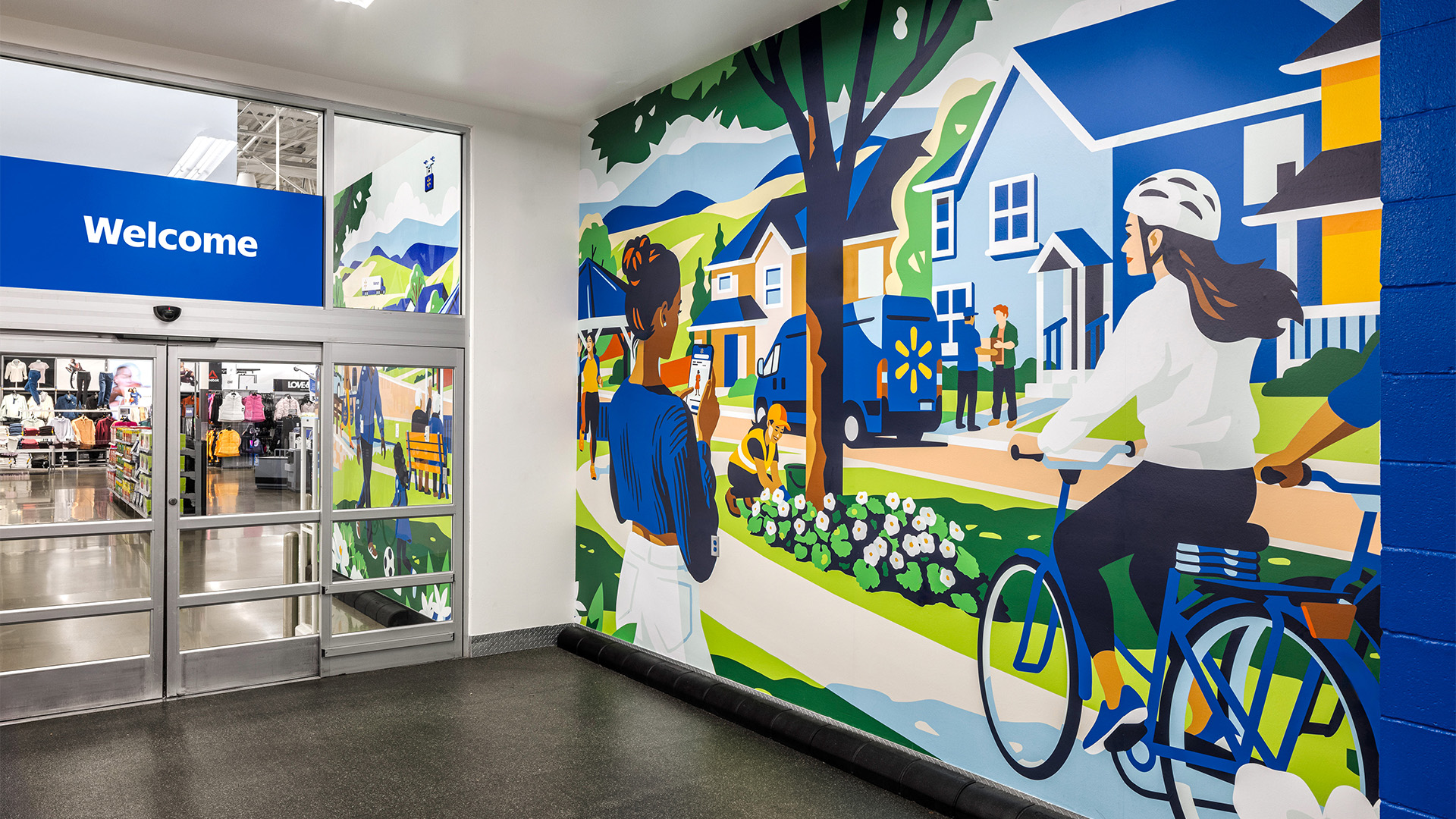Projects by HFA Team Lead Melinda Turner (AIA, NCARB) have never graced the covers of Dwell or Architectural Digest or been in the running for a Pritzker Prize. But if you’re among the millions of Americans who regularly shop at Walmart, you’ve experienced her work directly—even if you didn’t actually notice it.
“In school, everybody always wanted to do the big skyscrapers and the fancy designs, but in architecture, I have always had a unique drive to focus on the everyday,” Melinda said. “I remember thinking that if I ended up designing public restrooms, I would be a happy camper. Believe it or not, my first job out of college was designing Walmart restrooms!”
Melinda’s 12-person team is part of HFA’s broader Walmart U.S. remodel program, which encompasses about 50 A+E professionals under Courtney Ayres (NCIDQ, RID), a Senior Architectural Team Lead and interior designer with nearly two decades of experience.
“Walmart is the world’s biggest retailer, and so the numbers are just enormous,” Courtney said. “You’re talking about 255 million visits every week across all of Walmart’s stores and websites globally. So even if you look at HFA’s Walmart work just in the United States and Mexico, the reach is massive. How often do we stop and actually think about that?”
Much the same could be said for the millions of shoppers, diners, guests and associates touched in various ways through HFA’s relationships with clients like Chick-fil-A, Target, Bojangles, Love’s and Slim Chickens, to name just a few.

Turning the Spotlight to Everyday Design
As Courtney sees it, all contributions to a well-executed architecture and engineering project deserve to be celebrated, but unlike a soaring glass-and-steel atrium or the meticulously curated décor and finishes of a Michelin-star restaurant, Everyday Design is easier to miss.
“If you go into an art gallery or a high-end hotel, that beautiful interior design is one of the first things you’ll notice,” Courtney said. “But what about the functional use of finishes in a busy hospital, or the ergonomics of a perfectly comfortable desk chair? People tend to notice Everyday Design only if something is off. So, for us, it’s a marker of success in a way to go through our careers unnoticed or unseen.”
A series of forthcoming articles will turn the spotlight on just a few of the dozens of HFA architecture and engineering professionals whose work includes components of Everyday Design. That may include:
- structural engineers whose work guarantees that buildings handle their loads and stay level and true
- mechanical, electrical and plumbing (MEP) teams whose expertise is central in making sure buildings are code-compliant, safe, comfortable and efficient
- architects and interior designers who shape the basic experience at a wide array of client locations
The posts will cover some of the seemingly small details that in aggregate make a real difference for people—things like well-lit produce displays and makeup mirrors, never-slippery vestibule flooring, safety bollards at entrances or, yes, wall-mounted toilets that make it way easier for employees to mop the restroom floor.
They will also touch on the way HFA’s multidisciplinary teams collaborate with stakeholders such as clients, Authorities Having Jurisdiction and General Contractors. “We are very focused on having clear and concise documents as well as on relationship-building,” Melinda noted. “With a good relationship and lots of conversation, I’m always astonished at the problems that can be solved and the opportunities that you can uncover.”

HFA Vice President Bo Ebbrecht (AIA, NCARB, RIBA) said the spotlight on Everyday Design is long overdue.
“Being people-first is what we’re all about at HFA, and Everyday Design is absolutely a people-first undertaking,” he said. “It’s about putting yourself in someone else’s shoes to give them a great experience. I’m extremely proud of our Everyday Design teams and am thrilled to call more attention to their critically important work.”



.jpg)



.png)
.jpg)

.jpg)



